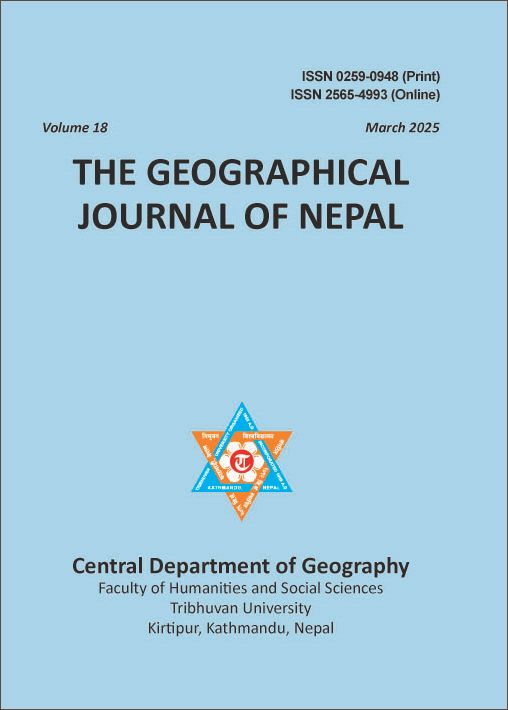Nexus between Economic Growth and CO2 Emissions: An Analysis of Environmental Kuznets Curve in Nepal
DOI:
https://doi.org/10.3126/gjn.v18i1.77062Keywords:
economic growth, CO2 emissions, population density, ARDL model Environmental Kuznets CurveAbstract
The relationship between economic growth and environmental sustainability has been a central focus in environmental socio-economics. This study investigates the Environmental Kuznets Curve (EKC) hypothesis in the context of Nepal, analyzing the relationship between carbon dioxide (CO2) emissions and economic and demographic factors. Employing time-series data from 1990 to 2020, the study utilizes an Autoregressive Distributed Lag (ARDL) model to investigate both the short-term and long-term dynamics among CO2 emissions, Gross Domestic Product (GDP), population density, and trade openness. The empirical results support the EKC hypothesis, indicating a positive correlation between economic growth and environmental emissions in the short run, with this relationship intensifying over time. To ensure data stationarity and uncover causal links, unit root tests and Granger causality tests were conducted. The Granger causality tests further indicate that CO2 emissions serve as significant predictors of GDP, population density, and trade openness. These findings highlight the critical need for sustainable economic policies that balance growth with environmental conservation in Nepal.
Downloads
Downloads
Published
How to Cite
Issue
Section
License
Copyright (c) 2025 The Author(s)

This work is licensed under a Creative Commons Attribution 4.0 International License.
© Authors




